Today we spent our first day visiting the city of Bath. We’re staying out in the countryside near Bathford for about a fortnight and are looking forward to explore the area. We’ve been sponsored by Bath Tourist Council to visit some of the attractions around the area and write about our experiences. We also plan to use our National Trust membership to visit some of their sites in the surrounding area.
Bath is quite a fascinating city with roots which date right back to the Roman occupation of Britain. From the beginning of time Bath was a smelly swampy place which the ancient Britons who occupied the place were loathe to venture into. There was a shrine to their local god Sulis but not much else. After the Roman Invasion of AD43 the Romans changed the whole landscape of Britain. They built forts, roads, towns and one of the things they brought with them was their bathing culture.
The Romans recognised the healing qualities of the mineral waters which bubbled up through the ground so around AD60 they began to develop Bath as a spa. Along with baths, temples were built and Bath became a centre of worship of the Roman Gods. The Romano-Britons worshipped the Roman gods but also worshipped local gods such as Sulis. It was from this name that the town gained the Roman name of Aequa Sulis (the waters of Sulis). Soon Bath was a centre of pilgrimage for the elderly and afflicted with older legionaries retiring in the surrounding countryside.
In AD410 Britain was left to organise its own protection when the legions were recalled to Rome. When the legions were recalled they left behind some of their culture and traditions. Those included bathing and Christianity.
The baths eventually became blocked and as the city expanded around them they were built over.
During the Georgian period Bath had a real resurgence with the wealthy travelling down to Bath for its healing waters. During this time the city was transformed with the Palladian mansions built by John Wood and his son using honey coloured limestone from Ralph Allens Combes Downes quarries.
These days the Palladian architecture is a real signature of Bath. Over the next two weeks we are looking forward to exploring the city and the surrounding area.
Bath Abbey
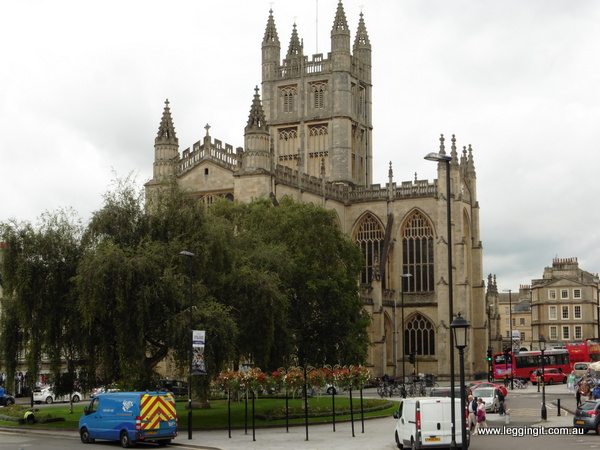
The Abbey Church of St Peter and St Paul or Bath Abbey as it’s best known, was founded around 675. The original church was probably a converted temple and became a convent first before converting to a monastery. The church was rebuilt a few times before being rebuilt after the Norman conquest. It was one of the largest cathedrals in the country however it shared a joint cathedral status with the smaller cathedral of Wells. However the bishop of Bath and Wells preferred Wells so the cathedral of Bath was second fiddle. Over time the cathedral fell into disrepair as the monks left unsupervised appeared to have enjoyed the high life. Oliver King the bishop of Bath and Wells visited the cathedral in 1499 and found it falling into ruins. He also reported that the monks were idle, undisciplined and had succumbed to enjoying the pleasures of the flesh.
After his visit Oliver King decided to rebuild the cathedral on a smaller scale and over the next 37 or so years the cathedral that we see today was built. The facade has a few features which refer to Oliver King.
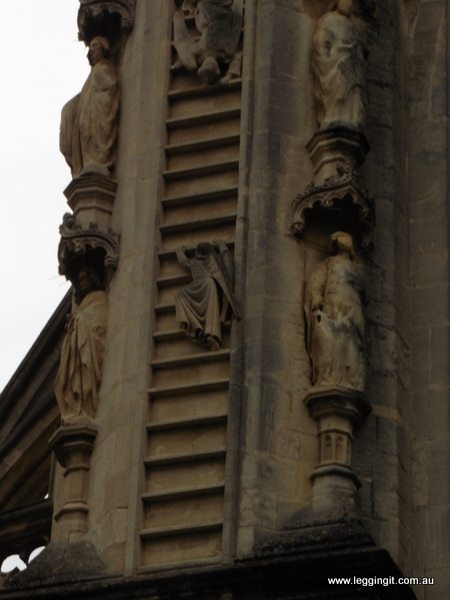
On either side of the entrance angels climb ladders which stretch right up the towers. Some are climbing up whilst others are coming down. Supposedly it was part of a dream which came to Oliver King. It was probably a warning to all (especially the monks) that to get to heaven you must climb the ladder. Also on the facade the other features which refer to the bishop are a crown over an olive tree. The olive tree represents Oliver and the crown of course represents his last name of King.
A few years later after Oliver King had died, King Henry VIII instituted the dissolution of the monasteries. All Catholic Monasteries, Priories, Abbeys, Friaries and Convents were disbanded and their possessions seized. The Cathedral and all the Abbey’s lands were confiscated by the crown in 1539 and sold. After the sale the lead roof, glass windows, and iron was stripped out of the cathedral.
Bath Abbey was left without a roof until 1574 when Queen Elizabeth decreed that the church be restored. By the early 1600’s the roof was back on and the church was now Anglican.
During the 1800’s Bath Abbey had a transformation with the removal of the buildings which had been built against its outside walls. There was also reinforcement of the upper walls with flying buttresses and the installation of fan vaulting on the ceiling inside the nave.
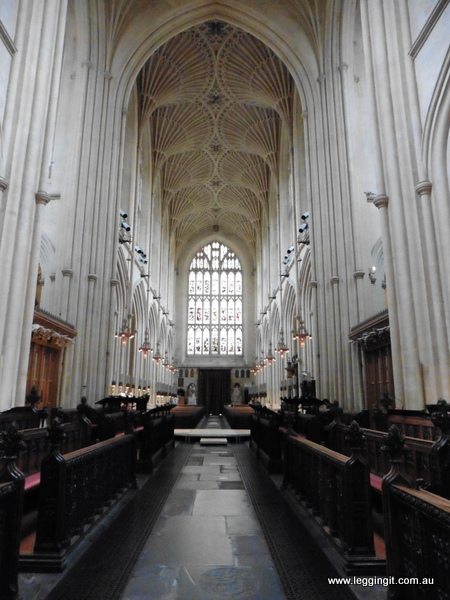
These days it’s hard to imagine just how big Bath Abbey actually was before Oliver King had it rebuilt. However, his custom tailored facade certainly sets it apart from other churches. Inside it’s quite airy with most of the walls taken up by windows. At the rear of the nave a huge stained glass covers almost the entire wall from ceiling to floor.
Around the walls are monuments to many famous people of Bath. They included Beau Nash, the master of ceremonies of Bath during the 18th century. He was the man who knew everybody worth knowing and greeted all newcomers worth greeting when they arrived in Bath. He was a real mover and shaker amongst those with money and could arrange whatever you needed. It seems pretty strange that a man who was so hedonistic would have a memorial in the church.

Another prominent person with a memorial in the church is Admiral Arthur Phillip. In 1788 his fleet of 11 convict ships arrived at Port Jackson and established the penal settlement at Sydney cove in that far off colony of New South Wales. From humble beginnings on the first of January 1901, the colony was to become part of the Commonwealth of Australia. After a stint as governor of New South Wales he returned to Britain and continued his naval career eventually retiring to Bath. He remained a supporter of the colony and over his memorial an Australian flag flies.
Entry to the Abbey is free but you are welcome to make a donation.
Roman Baths

Nearby to the Bath Abbey is the famous Roman Baths. It’s housed inside the concert hall built in 1897 which is part of the Grand Pump Room. The Roman Baths has an extraordinary museum which leads you through the depths of what was the centre of Roman life in Bath. At the reception audio guides are issued and are a must to fully experience what life was like in the Baths. The first stop in the Roman Baths is the top of the baths where surrounded by roman statues there are tremendous views of the baths below. You can almost hear the sounds of voices and water splashing as the Romans cooled off in the water.
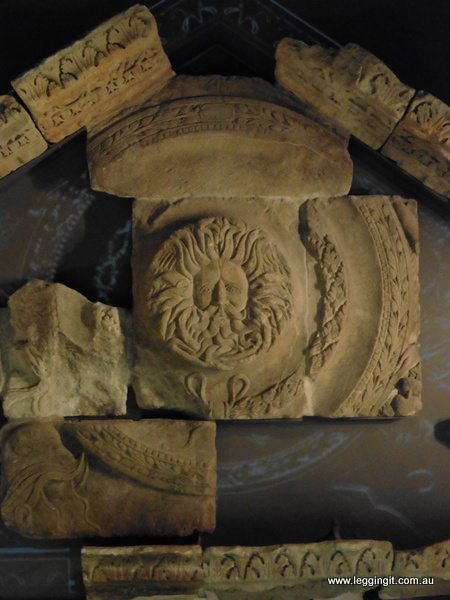
Beneath the concert hall the museum continues, exposing the old roman buildings that lie below street level. The hundreds of years which passed after the Romans left Bath saw many of the buildings fall into disrepair or be reused in other buildings. As such the street level has changed from various layers of rubble. The museum displays all sorts of Roman artefacts found in various excavations of the site. One of the interesting artefacts is curse letters. They were letters written accusing someone of a crime against another and putting a cure on them. Sheets of thin lead were written on and then sacrificed to Sulis-Minerva by throwing it into the spring. Most are written in Roman but one interesting one is written in the local language for the Bath area.
Around the main baths hallways lead off to what were once hot tubs, warm tubs, massage rooms, and dressing rooms. It’s quite fascinating for during our trip to Turkey Michele had a traditional Turkish bath and massage in a 700 year old bath complex. In Turkey their bath was the same as what the Romans were doing here.
As Turkey was once part of the Roman empire it was interesting comparing the two structures and seeing how alike they were. In the ruins of many of the roman cities we visited in Turkey their bath complexes were quite extensive.
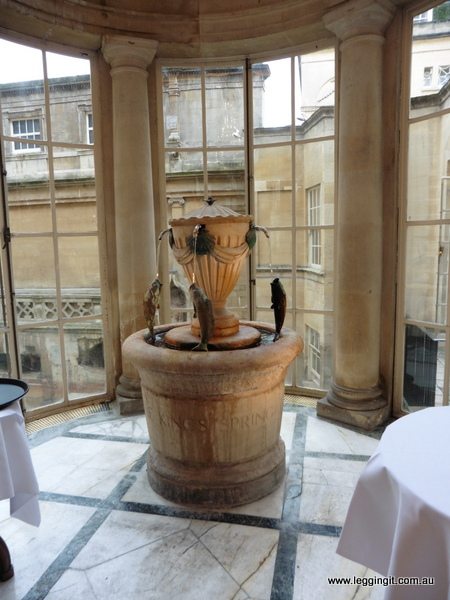
After poking our way around the museum we stopped at the restaurant, housed in the old concert hall to sample some of Baths healing water. It was clear but smelt a little of sulphur. Despite its healing properties we won’t be drinking too many litres of it as it tasted foul. It’s quite interesting that during the Georgian period doctors would prescribe visiting various baths in the city. They’d prescribe their patients drink certain water at certain times during the day to cure their ailments. These days the hospital still use Baths mineral water for certain condition, however they concentrate more on soaking in it.
The Roman Baths were really fascinating to visit and really a must see when visiting Bath.
Entrance to the Roman Baths is £15.00 and information on opening hours is here.
Bath Hop-on Hop-off Tour
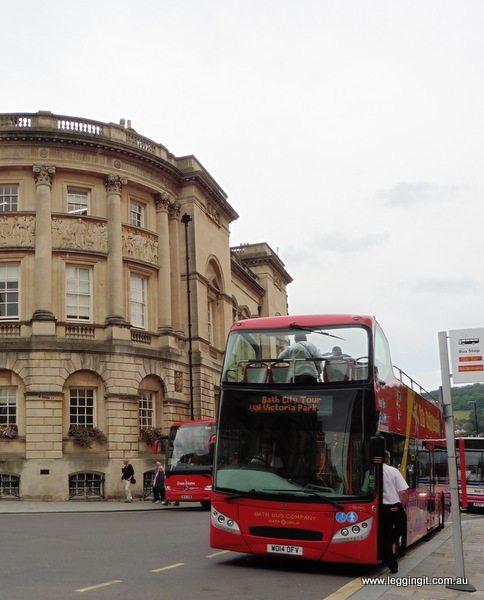
After visiting the Roman Baths we decided to get a better idea of the layout and history of Bath by joining the Bath Hop-on Hop-off Tour. With the ticket are discount entry to various Bath Museums and attractions. We haven’t been on a Hop-on Hop-off type tour since a dreadful one in Spain. However, we are happy to announce that the Bath Hop-on Hop-off Tour changed our minds.
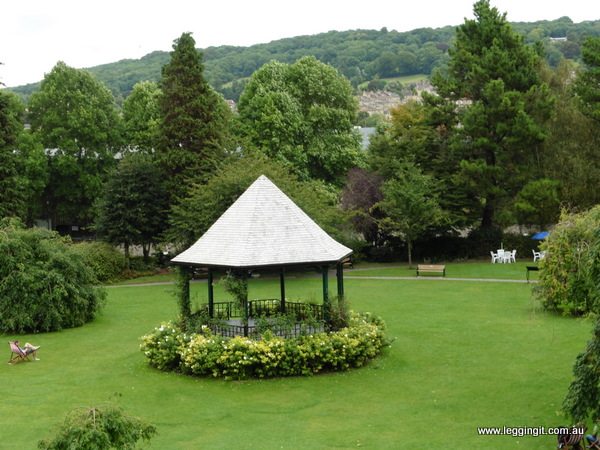
There are two tours on offer, the city tour and the skyline tour. We started with the City Tour which starts from High Street near the Abbey. It does a loop around Grand Parade and the lower part of the city before heading into the upper part of the city. Around the lower part of the city it takes in the Abbey, Roman Baths, Guildhall markets, Parade Gardens whilst a commentary explains the history of Bath. There’s a recorded commentary and on some buses an actual tour guide.
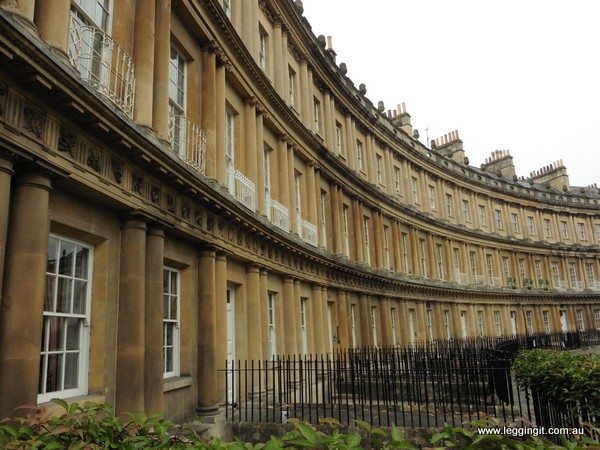
As the bus made its way up the hill we had a great view of the beautiful Palladian buildings of Bath. The Palladian buildings of Bath are the work of John Wood (the elder)and his son(also named John). They designed and built The Circle before building the Royal Crescent. Their designs spread throughout the city and surrounding countryside.
The Bath Hop-on Hop-off Tour takes in some of the Woods finest buildings. In the upper part of the city there are stops at some really great museums such as the Jane Austen Centre, Assembly Rooms, Museum of Bath Architecture, Fashion Museum, Eastern Asian Art Museum and No 1 Royal Crescent. There’s something for everyone and visiting the local museums give a great insight into the Bath Story.
In the top of the city the bus passes the beautiful gardens of Baths Botanical gardens before slowly winding back down through the city streets to the Abbey.
The Bath Hop-on Hop-off Tour was a great way to get to see the layout of the city. Over the next few weeks well be visiting many of the museums and attractions we passed today on the bus. It should be great fun.
The Bath Hop-on Hop-off bus costs £14.50 for a 24 hour ticket.
We would like to thank Visit Bath for their support during our time in Bath


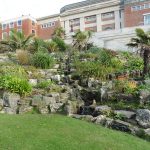
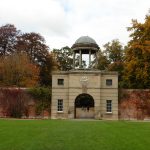
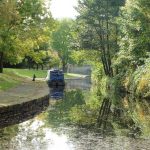

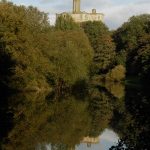
Bath is a lovely city. I especially remember enjoying my visit to the baths. The abbey looks beautiful, will have to visit that next trip. Thanks for sharing on #TheWeeklyPostcard.
The Abbey is beautiful inside well worth a look
I so enjoy reading along with you on your journey as I have never been to UK. I still struggle with the age of such places coming from a new country like Australia. It is just so incredible. I am a sucker for churches, cathedrals, etc and would love to visit the Abbey. I never knew that Admiral Arthur Phillip and Bath had ties, nice to see the memorial. We would utilise the hop on/hop off too, they are so good for getting about and learning a quick bit about the places you are visiting. Thanks so much for linking up with #TheWeeklyPostcard
To tell you the truth we did not know about Arthur Phillip either…on of the wonders of exploring is you find things you don’t expect
I enjoyed reading about the history of Bath Abbey, especially about the angels climbing the ladder to heaven. Looking forward to my trip to Bath later this year. #TheWeeklyPostcard
Thanks Ahila Bath has lots to see and do I am sure you will enjoy it.
We are also Aussies and also loved bath! We drove and went by foot but had a great time! #theweeklypostcard
It is such an easy place to get around on foot as well, glad you enjoyed it
Bath looks so charming! I will visit only because of the Roman baths ;0) I didn’t know there was a hop on, hop off bus in town. That is a good advantage!
The baths are amazing but there are so many other places to see there….the bus makes it easy to get around
This is a great write up on Bath and brings back many happy memories of my few days visit there this July. We were very jetlagged when we got on the Hop On Hop Off bus, so I ended up sleeping through most of the Skyline tour and have no idea what I missed.
How sad you missed the skyline tour but I am glad you managed to enjoy the rest of Bath